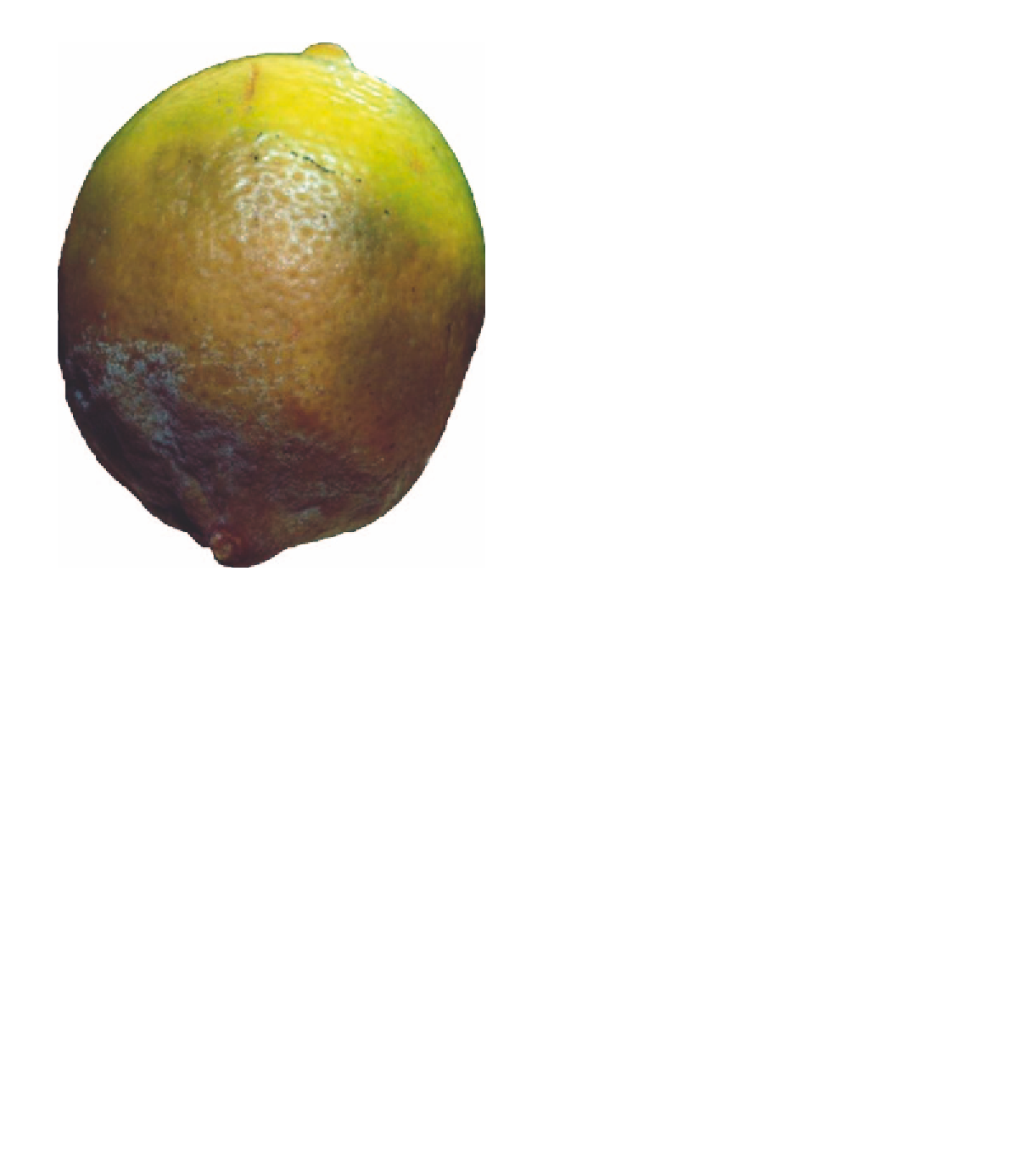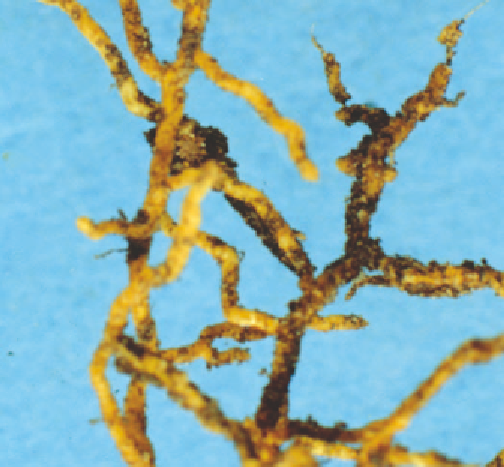Agriculture Reference
In-Depth Information
NEMATODES
NEMATODE-INDUCED DECLINES
■
Cause
The nematodes
Tylenchulus semipenetrans, Paratrichodorus
spp.
Symptoms
In general, excessive nematode infestation causes decline
symptoms that resemble drought, salinity, poor nutrition and
other root diseases. These symptoms can include chlorosis
and sparse foliage, and small fruit. This is due to a reduction
in the ability of the roots to function normally, as a result of
attack by the nematodes. Trees with root systems infested
with nematodes therefore tend not to respond to fertiliser
application, and show symptoms of water stress even when
water is not limiting. Furthermore, injury to the roots by
nematodes can facilitate infection by other pathogens
(e.g. Phytophthora), thus exacerbating tree decline.
Examination of root systems affected by
T. se mipe ne t ran s
can be partially diagnostic. The gelatinous material in
which the nematodes eggs are laid can cause soil particles
to cling to infested roots, even when washed under running
water. Soil particles are easily removed from healthy roots.
However, accurate diagnosis can only be obtained by
laboratory analysis, as sometimes infection of roots by
beneficial mycorrhizal fungi can result in soil particles
Fig 6.43 Stem-end rot. A firm, tan-coloured rot begins at the stem end
and spreads slowly through the fruit. Symptoms are often similar to
those of phytophthora brown rot.
between healthy and diseased tissue is generally distinct,
with the decay advancing in streaks corresponding to the
fruit segments.
Source of infection and spread
The fungi causing stem-end rot live mainly on dead twigs
and branches. Fruit from older trees are more likely to be
infected as inoculum levels build up in dead twigs. Fungal
spores infect fruit during wet weather. After infection, the
fungi remain dormant in the 'button' of the fruit until
ripening. Infected fruit generally show no external signs of
the disease when harvested, although mature fruit left on
the tree may develop symptoms.
Importance
Stem-end rot is occasionally serious, particularly if high
ethylene concentrations are used for degreening.
Management
•
Spray with the recommended registered fungicides at
half to three-quarters petal fall.
Fig 6.44 Roots affected by the nematode
Tylenchulus semipenetrans
.
Note soil particles adhering to the roots.
Use the recommended postharvest treatments.
•












